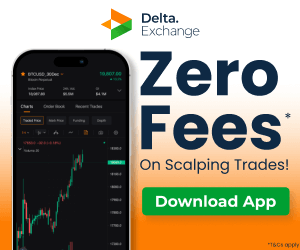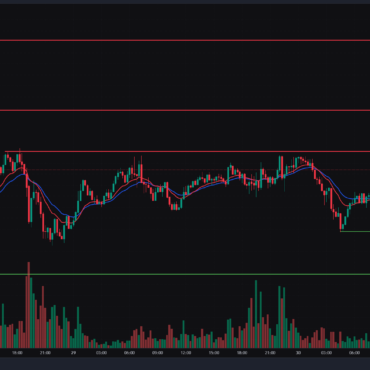The cryptocurrency market is evolving rapidly, with new trends shaping the future of digital assets. Investors are increasingly looking at projects that integrate artificial intelligence (AI), Web3, and blockchain interoperability. These sectors are gaining momentum as they solve real-world problems and attract institutional interest. Let’s explore the key trends and the top projects leading the way in 2025.
1. AI-Powered Crypto Projects
AI and blockchain are merging to create decentralised networks that enhance smart contracts, trading algorithms, and data processing. These projects aim to democratise access to AI tools while rewarding users with native tokens. Businesses are increasingly adopting AI-driven crypto projects to improve automation and efficiency.
Why It Matters: AI crypto projects address critical issues such as predictive analytics, machine learning, and automation without relying on centralised tech giants. They offer significant potential in industries like finance and healthcare, making them attractive investment options.
Challenges: Many AI-focused blockchain projects face scalability issues. Additionally, integrating AI with blockchain requires substantial computational resources, which can slow adoption.
Projects to Watch:
- Bittensor (TAO): A decentralised AI network that incentivises nodes to contribute computing power and share AI models.
- Fetch.ai (FET): Specialises in autonomous agents for supply chain optimisation and data sharing.
- Render (RNDR): A decentralised GPU rendering platform leveraging AI to enhance digital content creation.
2. Web3: The Decentralized Internet
Web3 is revolutionising the internet by shifting control from large tech corporations to users. Decentralised applications (dApps), tokenised platforms, and censorship-resistant networks are gaining traction. The focus in 2025 is on Web3 solutions that offer seamless user experiences and real-world applications.
Why It Matters: Regulatory scrutiny of centralised platforms is driving demand for decentralised alternatives. Web3 enables users to own their data, reducing reliance on intermediaries.
Challenges: The user experience in Web3 applications remains complex, and high transaction fees on Ethereum-based networks hinder adoption.
Projects to Watch:
- The Graph (GRT): A blockchain indexing protocol that simplifies data retrieval for decentralised applications.
- Arweave (AR): provides permanent, decentralised storage solutions ideal for Web3 applications.
- Helium (HNT): Builds decentralised wireless networks for IoT and 5G connectivity.
3. Interoperability: Connecting Blockchains
Interoperability allows different blockchain networks to communicate, enabling seamless asset transfers and data exchange. This trend is crucial for the growth of decentralised finance (DeFi) and cross-chain applications. Many new projects are focusing on developing secure and efficient cross-chain bridges.
Why It Matters: A fragmented blockchain ecosystem restricts innovation. Interoperability enhances liquidity, scalability, and the overall usability of digital assets.
Challenges: Cross-chain bridges are prone to security vulnerabilities, and regulatory concerns over multi-chain transactions persist.
Projects to Watch:
- Polkadot (DOT): Connects different blockchains while maintaining security and scalability.
- Cosmos (ATOM): Uses the Inter-Blockchain Communication (IBC) protocol to facilitate seamless transactions between independent chains.
- Chainlink (LINK): Expanding beyond oracles, its Cross-Chain Interoperability Protocol (CCIP) enhances smart contract functionality across multiple networks.
Broader Trends to Understand
These emerging sectors are not operating in isolation. Several macroeconomic and regulatory factors are influencing their growth:
- Institutional Adoption: Large financial firms are exploring tokenisation and interoperability solutions to enhance digital asset investments.
- Regulatory Clarity: Expected policy shifts in 2025 may provide clearer guidelines for Web3 and cross-chain projects.
- Community-Driven Innovation: Web3 thrives on grassroots movements, with decentralised autonomous organisations (DAOs) shaping new developments.
How to Approach Investing
Investing in emerging crypto trends requires strategic planning. Here are key considerations:
- Diversification: Allocate funds across AI, Web3, and interoperability projects to spread risk.
- Token Utility: Evaluate whether a token has a clear use case, such as governance, staking, or facilitating transactions.
- Ecosystem Growth: Look for projects with active development, strong partnerships, and a growing user base.
- Volatility Management: Crypto markets are highly volatile. Setting stop-loss levels and securing profits can mitigate risks.
- Staying Informed: Follow project updates through official channels and community discussions to keep track of major developments.
Risks to Keep in Mind
While these trends offer exciting opportunities, investors should remain cautious.
- Market Hype: AI and Web3 are trending topics, but some projects may lack real-world utility.
- Regulatory uncertainty: governments might introduce regulations affecting cross-chain transactions and decentralised platforms.
- Security Vulnerabilities: Hacks and smart contract failures have resulted in significant losses in the past.
Conclusion
The crypto market in 2025 is set to be shaped by AI integration, Web3 expansion, and blockchain interoperability. These trends present strong investment potential, but careful research and risk management are crucial. With institutional backing and technological advancements, these sectors could redefine the digital asset landscape. However, investors should stay informed and approach opportunities with due diligence. As the industry evolves, adaptability will be key to making informed investment decisions.
Written By Fazal Ul Vahab C H




